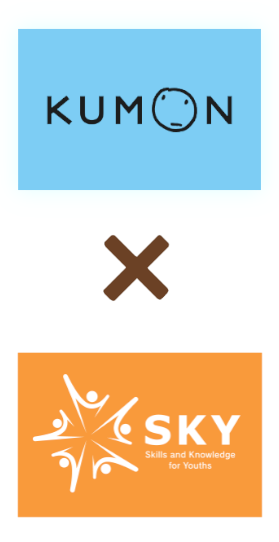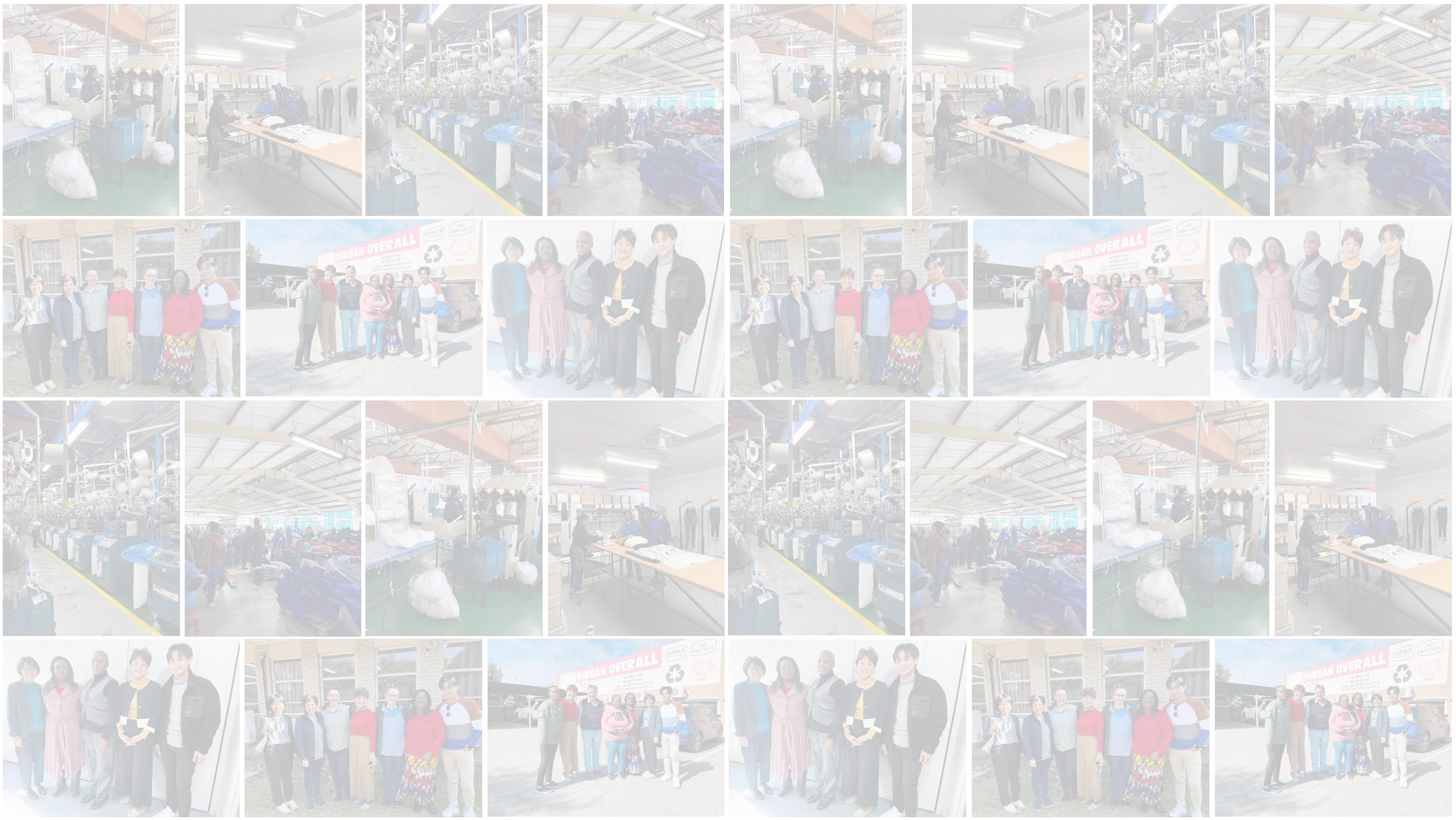The SKY project is collaborating with Kumon Institute of Education, Co., Ltd. to evaluate the skills of young South African industrial workers, aiming to improve their non-cognitive skills through habitual learning of mathematics.
“The Kumon Method” is a self-study method which originated from Japan. In this project, math and arithmetic materials from the Kumon Method are used as interventions. Then, the effects on non-cognitive skills are measured by SKY’s unique skills assessment module. We spoke with Ms. Mariko Suzuki and Mr. Shunji Ise of the Research Planning Team, Licensing Business Promotion Department of Kumon Institute of Education Co., Ltd. about the collaboration.
This collaboration between the SKY project and Kumon Institute of Education: “Improving Non-cognitive Skills of Industrial Workers through Habitual Mathematics Learning and Measuring its Effectiveness” has been selected as one of the 2022 Research Projects of the “EDU-Port Japan: Public-private initiative to introduce Japanese Style education overseas” by the Ministry of Education, Culture, Sports, Science and Technology (MEXT) .
Please tell us about the Kumon Method.
Suzuki: The Kumon Method is a learning method that began in 1954 when its founder, Kumon Toru, a high school math teacher, handmade learning materials for his oldest son who was in the second grade of elementary school. He handmade calculation problems one by one on loose-leaf paper and gradually made it difficult. So that that his son would have no trouble with mathematics in high school. As he continued to repeat this process, the son was able to solve differential and integral calculus in the 6th grade of elementary school. (For more information, please visit the website: The Kumon Method and Its Strengths | ABOUT KUMON | Kumon Institute of Education (kumongroup.com)
By starting with problems that students can solve smoothly, they are willing to tackle the problems easily. Then by accumulating “I can do it,” experiences they will gain a sense of self-affirmation and the ability to solve problems on their own. Since the first Kumon math class opened in 1958, Kumon method has expanded to more than 60 countries and regions, with approximately 3.5 million students.
Are the learning contents different in each country?
Suzuki: The Kumon Method is not based on the standard courses of study of Japan, but rather on a unique arrangement of learning stages. Because it’s not adapted to any one country, same problems can be used internationally.
In this project, workers are learning the English version of Kumon’s math and arithmetic materials using a tablet. We can monitor their handwriting data and learning progress of the participants, so we can see remotely what is going on in South Africa from Japan.
Please tell us the details about this collaborative project.
Suzuki:As a project selected by EDU-Port, we are targeting the young people working in the Republic of South Africa to improve their non-cognitive skills though habitual mathematics learning and measuring its effectiveness. We have the factory workers from seven companies to study the Kumon method for three months. We evaluate their cognitive and non-cognitive skills. Before and after this math study. (October 2023) We are in the process of conducting post-intervention measurements and exchanging ideas on how to analyze and interpret the data after it has been collected. We already have Kumon classes for children in the Republic of South Africa, but this project is for employees at workplaces, so we are working with a new structure / organization that includes local collaborators.
Have you been interested in non-cognitive skills?
Suzuki: Over the many years that our company has been expanding our classroom business mainly for children, we have experienced that learners acquire not only academic ability, but also concentration, self-confidence, self-esteem, and persistence. From those experiences, in order to develop visible academic skills, we recognized the importance of invisible skills (non-cognitive skills) that contribute to a positive attitude toward learning.
We felt that non-cognitive skills were important for adults as well, but we did not have many examples of the Kumon Method being offered to working people.
How do you feel about the results of the program?
Ise: It has exceeded our expectations that both the continuity of participation and the amount of learning. I feel the workers are more positive about the learning opportunities than we had expected. We were surprised to see such a positive response. We are happy, but at the same time, we feel the need for a learning program for them.
Suzuki: I am surprised at the number of people who have been learning so steadily and want to learn and improve their skills. At the beginning, I was worried about whether they would be willing to study using their own time, especially since we asked them to participate through their companies, but they have continued to do so for three months. I think there should be a reason, other than the quality of learning content. I would like to clarify the background in the analysis to come.
What kind of analysis are you considering?
Ise: We would like to focus on analysis from the viewpoint of concentration and work capacity, as well as on “arrangement skills,” “attitude toward checking and reviewing,” and “communication with superiors in the workplace.” For example, some Japanese companies which introduced the Kumon Method said, “the ability to make arrangements has improved” and “supervisors are now able to see the good points of their coworker” through Kumon method. We wanted to see if this was also true in South Africa, so we asked to add some questions related to these perspectives for the skills assessment of the Nagoya University SKY project. It is still hard to imagine how this will affect as factors and how they will be organized as skills until the analysis by the SKY project members are conducted, but I am interested in it.
Suzuki: The Kumon Method has four features: “individualized Instruction”, “Self-Learning”, “Small-Step Worksheets”, and “Kumon instructors.” How they can use the Kumon leaning material totally depends on how the Kumon instructor pays careful attention to learners. In this project, we think the key point is how the supporters interact with adult learners.
There is always an instructor in the Kumon classroom, who consciously or unconsciously pushes the students to overcome challenges while providing learning guidance. By accumulating the experience of receiving praise and recognition from the instructor, the student think “I’ve worked hard so far, and I’m going to do the same on next step.” We believe that the presence / interaction of other person contributes
to develop the underlying non-cognitive skills.
In this practice, there is no instructors because the study is conducted in the workplace. Therefore, we have also expressed our request to the analysis team of the SKY project that how they interact with their direct supervisors and whether they are motivated by such comments as “You’re doing great!” Because we know the importance of other person’s involvement and presence, I am interested what would happen if we pursue this feature and I believe it can be a strength for our business.
It is like having a mentor in the workplace, isn’t it?
Suzuki: Most training is in the form of “passively learning by going to an outside center,” so I don’t think it is common to have the training program conducted on a daily basis in the “workplace” with the involvement of “people in the workplace.” Also, if the supervisor’s involvement makes the employee feel, “I want to work in such a workplace that I can be involved in this way”. It can provide a new benefit to the company, especially in the countries where job hops are so popular. I have a hypothesis that if the training not only improves productivity by enhancing skills and abilities, but also makes people feel that their work is worthwhile, it will be a good cycle for both the workers and the company.
How do you plan to develop this as a business?
Suzuki:Despite differences in cultural backgrounds, school-aged children are expected to enhance similar abilities and non-cognitive skills to some extent. On the other hand, I think the ability expected to be enhanced in adults may be different among their occupations and fields. The SKY Project’s skills assessment module can clarify the expected abilities required for the occupations. It allows us to understand the skills that are emphasized in the particular industry. We need to identify which segments of the Kumon Method are useful as effective solutions to those skills. Non-cognitive skills are somewhat versatile across sectors, so I hope to be able to say that the Kumon method can contribute in a wider range of industries.
Please tell us about working with SKY on this project.
Suzuki: This project is all new to us. We were able to implement it thanks to the SKY team. They have a lot of experience in practical research in the African region and have accumulated a lot of data, so we have a lot of things to compare. I am grateful to them for their flexibility in dealing with skills evaluation and assessment after the implementation.
In fact, from the first time we met at the meeting of the EDU-Port project of the Ministry of Education, Culture, Sports, Science and Technology (MEXT), I felt empathy with Prof. Yamada’s thoughts.
Ability in sense of SKY policy, which is not limited to academic achievement, is in line with our philosophy of “By discovering the potential of each individual and developing his or her ability to the maximum.” On the other hand, even after the abolition of apartheid, South Africans still do not have equal educational opportunities, and the reality is that academic background determines occupations and positions. I feel the significance and interest of Kumon and SKY working together to contribute to society by providing opportunities for those who want to learn and demonstrate their abilities.
I see the goals of KUMON and SKY are similar.
Suzuki: We can show new value to society by bringing together two different approaches, research and business. Kumon can provide the method and practice opportunities as business. SKY is good at organizing and presenting them to society, including policy recommendations.
In such a context, we feel it rewarding to be involved in this socially meaningful project, rather than just inventing new businesses. Even we face many challenges, we are proud of ourselves because we are connected by the desire for a greater purpose in advancing this research. I feel the very good atmosphere of the SKY project team, and I learn a lot from Prof. Yamada’s passion.
I think, in academic research, there is a “certain required level of analysis.” But Prof. Yamada told us that “it is just as important the research results serve a guideline for policy formation and business practice, as the research results are novel as academic analysis.” I think it is because Prof. Yamada, having practical experience and understanding of the private sector, is willing to listen to our ideas and circumstances.
What is the significance that KUMON was involved in the project?
I think we were able to take a valuable step forward as a first trial of a business for adults. To move forward step by step at one time, it is the same for business and research. There are things we have learned from working together at the same time, there are areas we don’t understand and we would like to know more. Each of us will move one step at a time, and once we have built up what we have learned “as academics” and “as a business,” we would like to decide where to delve further and challenge ourselves to take another step forward.




